 June 17, 2021 John E. Ross, KD8IDJ, Editor
| ||||||
Nominees for ARRL Director, Vice Director Solicited in Five Divisions Full ARRL members in the Central, Hudson, New England, Northwestern, and Roanoke Divisions will have the opportunity this year to choose a Director and Vice Director for 3-year terms beginning on January 1, 2022. ARRL is now seeking eligible nominees for these ARRL is governed by its Board of Directors. A voting Director is chosen by ballot by the full (i.e., licensed) ARRL members in each of its 15 Divisions. Vice Directors, who serve in the absence of the Director at a Board meeting and succeed to the position of Director should a vacancy occur, are chosen at the same time. Elections are held in five Divisions per year. Nominee Qualifications A nominee must be at least 21 years old and must have been licensed and a full member of ARRL for a continuous term of at least 4 years immediately preceding nomination. Each nominee must provide information concerning their employment, ownership, and investment interests, and other financial arrangements to ensure compliance with the Conflict of Interest Policy (see Article 12 of the ARRL Articles of Association and Bylaw 45). Qualifications for Director and Vice Director are identical. Nomination Procedure Step 1: Obtain official nominating petition forms. Starting July 1, any full member residing in a Division where there is an election may request an official nominating petition package in writing, either by letter or via email to dmethe@arrl.org. Step 2: Obtain signatures and complete questionnaire. Only the official form may be used. The petition form has two sides. To be valid, a nominating petition must name the candidate and must bear the signatures of 10 full members of the appropriate Division. Step 3: Submit petition form. The completed form must reach the Secretary no later than noon EDT on Friday, August 20, 2021. Submissions may be by electronic transmission of images (i.e., a PDF or JPEG attachment to an email) or facsimile, provided that upon request, the original documents are received by the Secretary within 7 days of the request. On Monday, August 23, 2021, the Secretary will notify each candidate of the name and call sign of each other candidate for the same office. Balloting In cases where only one eligible candidate has been nominated for an office, that person will be declared elected by the Ethics & Elections Committee. If there is more than one eligible candidate for an office, the full members in good standing of that Division as of September 10, 2021, will have the opportunity to cast ballots. Official paper ballots and candidates' statements will be mailed to eligible members no later than October 1, 2021. Completed ballots must be received at the designated PO Box in the envelope provided by noon Eastern Time, Friday, November 19, 2021. The Incumbents The incumbent Directors and Vice Directors, respectively, in the five Divisions are: Central: Kermit Carlson, W9XA, and Carl Luetzelschwab, K9LA. Hudson: Ria Jairam, N2RJ, and Bill Hudzik, W2UDT. New England: Fred Hopengarten, K1VR, and Phil Temples, K9HI. Northwestern: Mike Ritz, W7VO, and Mark Tharp, KB7HDX. Roanoke: Bud Hippisley, W2RU, and Bill Morine, N2COP. Read an expanded version. Family Comes First During Hurricane Preparation for Home and Station The Atlantic hurricane season began on June 1 and continues through November 30, and two named storms have already shown up, although neither threatened the US. There's still time to make sure you, your family, and your ham station are prepared. Remember, your family's safety comes first.
Make sure you can take down and reinstall antennas quickly and efficiently when there's a threat of severe storms. VHF antennas mounted on masts and typical HF dipoles can be taken down and put up in minutes. Also, test all radios and peripherals, especially those you may not use on a routine basis, but might want during a severe weather emergency. This might include handheld transceivers (especially for VHF and UHF) and any HF gear that can easily run from emergency power sources. Know the name, call sign, and email address of both your ARRL Section Manager (SM) and Section Emergency Coordinator (SEC). Keep a list of emergency and public safety nets handy. Some hams
establish a "hardened" facility that's essentially stormproof, with ham gear installed inside. In addition, look for local/regional nets before a serious storm strikes, to learn or practice net procedure and get acquainted with all the players you might work with in a disaster: net and emergency managers, American Red Cross, Community Emergency Response Teams (CERT), Amateur Radio Emergency Service® (ARES), and Radio Amateur Civil Emergency Services (RACES) communicators. Obtain and learn how to use Winlink HF mail. "The advantages are clear, and that's why the Red Cross and others embrace Winlink," Rick Palm, K1CE, says in his July 2021 QST "Public Service" column. "There is a learning curve to gaining Winlink proficiency, however. It's not a system for spontaneous volunteers." On-air training is available. The National Weather Service offers information on personal and family hurricane season preparedness. Read an expanded version. ARRL Podcasts Schedule
The latest edition of Eclectic Tech (Episode 36) features includes a discussion of the current state of Digital Radio Mondiale, the approaching FCC deadline The On the Air and Eclectic Tech podcasts are sponsored by Icom. Both podcasts are available on iTunes (iOS) and Stitcher (Android), as well as on Blubrry -- On the Air | Eclectic Tech. Shop ARRL and Amazon Smile for Father's Day Father's Day is Sunday, June 20. Get Dad the perfect gift this year,
Use code DAD (one code per order) during checkout to save 20% when you shop our Father's Day gift guide now through June 20. 3Y0J DXpedition to Bouvet Island Canceled The Intrepid-DX Group announced over the weekend that it has canceled its long-anticipated 3Y0J DXpedition to Bouvet Island. The DXpedition team had planned to travel to Bouvet via the RV Braveheart, owned by Nigel Jolly, K6NRJ. Jolly has told the DXpedition that Braveheart is being sold and he's canceled its contract for the 3Y0J voyage. "The global pandemic has impacted the expedition charter vessel business very hard; this includes the venerable RV Braveheart, which has provided outstanding safety and service to many DXpeditions," The DXpedition said that it has stopped accepting donations and will refund 100% of the donations using the same method they were received. A dependency of Norway, Bouvet is a sub-Antarctic island in the South Atlantic. It is the second-most-wanted DXCC entity, behind North Korea. Read an expanded version. Kids Day is Saturday, June 19 ARRL Kids Day gets under way on Saturday, June 19 at 1800 UTC and concludes at 2359 UTC. Sponsored by the Boring (Oregon) Amateur Radio Club, Kids Day has a simple exchange suitable for younger Kids Day can be your opportunity to take the time to get kids on the air and mentor future amateur radio operators to show them the fun and excitement that ham radio has to offer. You might just be introducing the next generation of hams to the airwaves. Many communities have begun relaxing restrictions put in place due to COVID-19, but participants should follow the advice of state and local health authorities regarding gathering in groups, wearing of face masks, and social distancing guidelines, where applicable. If inviting youngsters into your shack is not feasible, consider other options for mentoring, such as using social media platforms, Zoom, or other no-contact methods. See the announcement for suggested frequencies. As with any on-the-air activity that includes unlicensed individuals, control operators must observe third-party traffic restrictions when making DX contacts. Additional details are on the ARRL website. May 2021 Volunteer Monitor Program Report The Volunteer Monitor (VM) Program is a joint initiative between ARRL and the FCC to enhance compliance in the Amateur Radio Service. This is the May 2021 Volunteer Monitor Program Report.
The Volunteer Monitor Coordinator had one meeting with the FCC, and one case was referred to the FCC for further action. -- Thanks to Riley Hollingsworth, K4ZDH, Volunteer Monitor Program Coordinator ARRL Learning Network Webinars Visit the ARRL Learning Network (a members-only benefit) to register, check on upcoming webinars, and to view previously recorded sessions. Antenna Zoning: Special six-part webinar series -- Fred Hopengarten, K1VR, author of Antenna Zoning for the Radio Amateur
Introduction to Remote HF Operation -- Davide Lanfranconi, W6DGE, and Kevin Shin-Wheeler, N7KSW, Cal Poly Amateur Radio Club / Tuesday, June 22, 1 PM EDT (1700 UTC). Lanfranconi and Shin-Wheeler will discuss the idea, process, and challenges encountered while getting their club's remote HF station on the air, as well as some methods and resources available for those with a similar interest. A Q&A session and live demo are included. ARRL members may register for upcoming presentations and view previously recorded Learning Network webinars. ARRL-affiliated radio clubs may also use the recordings as presentations for club meetings, mentoring new and current hams, and discussing amateur radio topics. These Learning Network presentations are sponsored by PreppComm.
The ARRL Learning Network schedule is subject to change. Amateur Radio in the News ARRL Public Information Officers, Coordinators, and many other member-volunteers help keep amateur radio and ARRL in the news.
Share any amateur radio media hits you spot with us. Vision-Impaired ARRL Member Takes Advantage of New Technology ARRL member Ben Murray, KD8JBS, of Bryan, Ohio -- the vision-impaired subject of a recent TV news piece -- says new technology he's now using has permitted him to enjoy ham radio more fully. The eSight device resembles virtual reality goggles. Murray has nothing but enthusiastic praise for the technology. "It has helped immensely with reading my radio displays and logs and being able to socialize in public with hamfests and other social events," Murray works as a board operator for WBNO/Q.96.5. In his spare time, he's an ARRL VEC Volunteer Examiner (VE). "Ben is one of our most dedicated VEs," says Assistant ARRL VEC Manager Amanda O'Brien, N1NHL. As Murray explains, "The technology uses a camera to process an image in real time. The image is then re-processed through some algorithms in the glasses and then presented back to the user on two OLED screens in front of my eyes, and I can zoom up to 24x and adjust contrast." Murray, 32, who was born legally blind with optic nerve atrophy, wears a pair of conventional eyeglasses behind his eSight device. For the first 26 years of his life, Murray says, he "was passed from doctor to doctor, ophthalmologist to ophthalmologist." In 2015, he learned about eSight's "smart" eyeglasses that fit over the user's head. At first he was skeptical, but once he experienced it for himself, he was sold. A community fundraiser helped Ben raise the $15,000 needed for his first pair of eSight glasses; he now wears the latest update. The adaptive technology is not widely covered by health insurance, and he's on a campaign to change that. The smart glasses have provided him with essentially 20/20 vision. As for ham radio, Murray's favorite activities incorporate a public service bent. "I enjoy hamfests and VE testing sessions. I'm the VE liaison for Williams County, Ohio, and I'm the Emergency Coordinator," he told ARRL. "I also enjoy public service activities such as festivals and parades where they include amateur radio [for] communications." Murray has been a ham since 2008. He upgraded to Amateur Extra class in 2012. -- With thanks to WNWO NBC24News, Toledo, Ohio Announcements
ARISS Announces Slow-Scan Television (SSTV) Event Amateur Radio on the International Space Station (ARISS) has announced that a slow-scan television (SSTV) event from June 21 - 26 will focus on amateur radio on the space shuttle, the Mir space "The ARISS team will be transmitting SSTV images continuously from June 21 until June 26," ARISS said in announcing the upcoming event. "The images will be related to some of the amateur radio activities that have occurred on the space shuttle, the Mir space station, and the International Space Station." Transmissions will start at or about 0940 UTC on Monday, June 21 and will end by 1830 UTC on Saturday, June 26. The ARISS SSTV blog will post the latest information. Signals should be receivable on a handheld with a quarter-wave whip antenna. Use 25 kHz channel spacing if available. Pass time predictions are available on the AMSAT website. Read an expanded version. The K7RA Solar Update Tad Cook, K7RA, Seattle, reports: Solar activity was weaker this week, with the average daily sunspot number declining from 34.9 last week to 13.9 this week. The average was affected by the one day with no sunspots, Saturday, June 12. Average daily solar flux dropped from 77.7 to 75.2. The Penticton Normally, the local noon reading (2000 UTC) is the official number for the day. You can get the three daily readings direct from the Dominion Radio Astrophysical Observatory. Predicted solar flux for the near term is 75 on June 17 - 20; 80 on June 21 - 24; 77 on June 25 - 28; 78 on June 29 - July 7; 79 on July 8 - 10; 77 on July 11 - 13; 76 on July 14 - 16, and 80 on July 18 - 20. Predicted planetary A index is 14 and 12 on June 17 - 18; 5 on June 19 - 25; 7 on June 26; 5 on June 27 - July 4; 15, 10, and 8 on July 5 - 7; 5 on July 8; 8 on July 9 - 11; 10, 12, 20, and 12 on July 12 - 15, and 5 on July 16 - 22. Something big may be about to happen on the sun. "We call it the Termination Event," says Scott McIntosh in this article by Tony Phillips. Sunspot numbers for June 10 - 16 were 29, 13, 0, 22, 11, 11, and 11, with a mean of 13.9. The 10.7-centimeter flux was 73.3, 77.3, 77.6, 68.9, 76.8, 75.5, and 77, with a mean of 75.2. Estimated planetary A indices were 5, 10, 10, 7, 4, 17, and 14, with a mean of 9.6. Middle latitude A index was 5, 11, 8, 7, 7, 15, and 15, with a mean of 9.7. A comprehensive K7RA Solar Update is posted Fridays on the ARRL website. For more information concerning radio propagation, visit the ARRL Technical Information Service, read "What the Numbers Mean...," and check out K9LA's Propagation Page. A propagation bulletin archive is available. For customizable propagation charts, visit the VOACAP Online for Ham Radio website. Share your reports and observations. Just Ahead in Radiosport
Upcoming ARRL Section, State, and Division Conventions Many conventions and hamfests have been canceled or postponed due to the coronavirus pandemic. Check the calendar of canceled events on the ARRL website.
Find conventions and hamfests in your area. ARRL -- Your One-Stop Resource for Amateur Radio News and Information. . .
Subscribe to...
Free of charge to ARRL members...
| ||||||
.jpg) positions. These could include incumbents or new candidates. It takes 10 full members in a Division to nominate a candidate for either office.
positions. These could include incumbents or new candidates. It takes 10 full members in a Division to nominate a candidate for either office.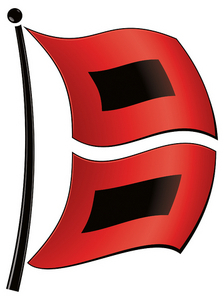 Your first stop should be a visit to the National Weather Service (NWS) page for
Your first stop should be a visit to the National Weather Service (NWS) page for 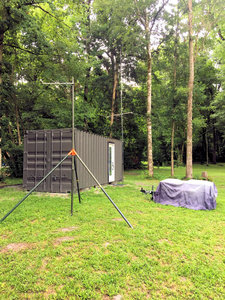
.jpg) The latest episode of the On the Air podcast (Episode 18) helps prepare listeners for ARRL Field Day, June 26-27. Fred Kemmerer, AB1OC, president of the Nashua Area Radio Society, offers advice about how to enjoy one of the largest ham radio operating events of the year!
The latest episode of the On the Air podcast (Episode 18) helps prepare listeners for ARRL Field Day, June 26-27. Fred Kemmerer, AB1OC, president of the Nashua Area Radio Society, offers advice about how to enjoy one of the largest ham radio operating events of the year! .jpg) for analog TV broadcasters, and an interview with John Stanley, K4ERO, about some of the potential downsides of the rise of Cycle 25.
for analog TV broadcasters, and an interview with John Stanley, K4ERO, about some of the potential downsides of the rise of Cycle 25. while supporting his favorite hobby. If you're browsing Amazon for electronics, sporting goods, ham radio gear, and more, we invite you to shop at
while supporting his favorite hobby. If you're browsing Amazon for electronics, sporting goods, ham radio gear, and more, we invite you to shop at 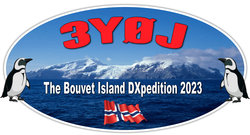 DXpedition co-leaders Paul Ewing, N6PSE, and Kenneth Opskar LA7GIA, said in announcing the news on June 13. "Today, we were informed that Braveheart will be sold. As a result, Nigel Jolly will no longer be associated with the ship, our contract with the ship has been canceled, and our deposit will be refunded. This is a very disappointing development to all involved."
DXpedition co-leaders Paul Ewing, N6PSE, and Kenneth Opskar LA7GIA, said in announcing the news on June 13. "Today, we were informed that Braveheart will be sold. As a result, Nigel Jolly will no longer be associated with the ship, our contract with the ship has been canceled, and our deposit will be refunded. This is a very disappointing development to all involved."(1).jpg) operators: first name, age, location, and favorite color. After that, the contact can be as long or as short as each participant prefers.
operators: first name, age, location, and favorite color. After that, the contact can be as long or as short as each participant prefers..jpg) A licensee in El Cerrito, California, received an Advisory Notice concerning use of his 444.700 MHz repeater for deliberate interference and unidentified transmissions.
A licensee in El Cerrito, California, received an Advisory Notice concerning use of his 444.700 MHz repeater for deliberate interference and unidentified transmissions.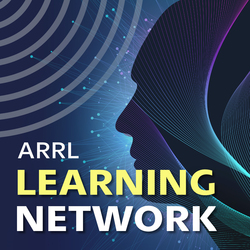 Part 4. PRB-1: A Deep Dive: Wednesday, June 23, 2 PM EDT (1800 UTC)
Part 4. PRB-1: A Deep Dive: Wednesday, June 23, 2 PM EDT (1800 UTC) he told ARRL. "And I'm able to see my computer screen too."
he told ARRL. "And I'm able to see my computer screen too."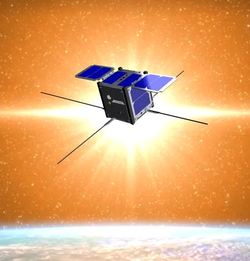 MIR-SAT1 (Mauritius Imagery and Radio - Satellite 1), the first amateur radio CubeSat from the Indian island nation of Mauritius is expected to be deployed from the International Space Station (ISS) on June 22. MIR-SAT1 will carry an amateur radio V/U digipeater (a downlink of 436.925 MHz has been coordinated).
MIR-SAT1 (Mauritius Imagery and Radio - Satellite 1), the first amateur radio CubeSat from the Indian island nation of Mauritius is expected to be deployed from the International Space Station (ISS) on June 22. MIR-SAT1 will carry an amateur radio V/U digipeater (a downlink of 436.925 MHz has been coordinated). 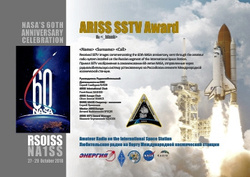 station, and the International Space Station. Transmissions will be on 145.800 MHz FM using PD120 SSTV mode.
station, and the International Space Station. Transmissions will be on 145.800 MHz FM using PD120 SSTV mode.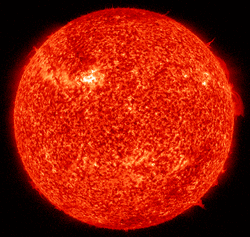 observatory in British Columbia -- the source for the 10.7-centimeter solar flux reading -- did not report a noon reading on June 16, so the morning (76.9 at 1700 UTC) and afternoon readings (77.1 at 2300 UTC) were averaged to come up with 77 as a reasonable approximation.
observatory in British Columbia -- the source for the 10.7-centimeter solar flux reading -- did not report a noon reading on June 16, so the morning (76.9 at 1700 UTC) and afternoon readings (77.1 at 2300 UTC) were averaged to come up with 77 as a reasonable approximation..jpg)








